Magnetic Field Lines
What are Magnetic Field Lines
A magnetic field can be visually represented by imaginary lines drawn around a magnet or a magnetized object. These lines are known as magnetic field lines or magnetic lines of force. As the magnetic field is a vector quantity it will have both magnitude and direction as shown in the image below. The strength of the magnetic field is given by the number of lines crossing a unit area perpendicular to the lines. A line drawn tangentially at any point on the field lines gives the magnetic field’s direction (refer to the red arrows in the image). The magnetic field lines are analogous to electric field lines.
Properties of Magnetic Field Lines
Here are some general facts and characteristics of magnetic field lines.
- Closed and continuous curve
- Density determines the magnetic field strength – crowding of field lines indicates a strong magnetic field
- Density decreases with increasing distance from the object
- The magnetic field and magnetic force are tangential to the lines
- The lines never cross each other. If they do, the tangent at the point of intersection will show different directions, which is not possible
Examples of Magnetic Field Lines
1. Bar Magnet
A bar magnet is a permanent magnet whose magnetism remains forever. The magnetic field lines in a bar magnet form closed lines. A bar magnet has two poles – the north pole and the south pole. The magnetic field lines come out of the north pole and terminate in the south pole. Inside the magnet, they travel from the south to the north pole. The magnetic field lines can be sketched by bringing a compass near the magnet. The compass, a magnet itself, aligns along these lines such that its needle points in the magnetic force direction.
Properties of Magnetic Field Lines of a Bar Magnet
Apart from the properties discussed in the previous section, the magnetic field lines of a bar magnet have the following additional properties.
- Flow from north to south pole outside the magnet and south to north pole inside the magnet
- Parallel and uniform inside the magnet and diverges and non-uniform outside
- Closer together at the poles
- Increases the magnetic field strength at the poles
Two Magnets Next to Each Other
When two bar magnets are placed next to each other, their magnetic field lines are distorted due to the forces of attraction and repulsion between magnets. The rule is that like poles repel and opposite poles attract. When the north pole of one bar magnet faces the south pole of another, the magnetic field lines will join together (refer to (a) in the above image). The lines will come out from the north pole and terminate in the south pole. The lines will become denser in the region between the two poles. When two north poles or two south poles are close to one another, the magnetic field lines will bend away from each other due to repulsion (refer to (b) in the image).
2. Current-carrying Wire
Ampere’s law has shown that current flowing through a wire produces a magnetic field. The magnetic field lines around any current-carrying wire are concentric circles with the center lying on the wire. The direction of magnetic field lines can be determined using the right-hand rule. Suppose the thumb points in the current direction. The fingers curling around the wire give the direction of the magnetic field. The strength of the magnetic field is inversely proportional to the distance from the wire.
3. Solenoid
A solenoid is a coil of many circular turns of insulated copper wire wrapped tightly like a helix, often around a metallic core. The shape of a solenoid is typically cylindrical with a straight axis. When current passes through the wires, a magnetic field is produced; thus, the solenoid behaves like an electromagnet. The magnetic field lines are similar to that of a bar magnet. Inside the solenoid, the field lines are parallel and the magnetic field is uniform. On the other hand, the magnetic field outside is zero.
4. Horseshoe Magnet
A horseshoe magnet takes the shape of a horseshoe or a U shape. It can be made into either a permanent magnet or an electromagnet. The primary advantage of a horseshoe magnet over other types of magnets is that the magnetic poles are very close to one another resulting in a much stronger magnetic field.
-
References
Article was last reviewed on Sunday, September 4, 2022

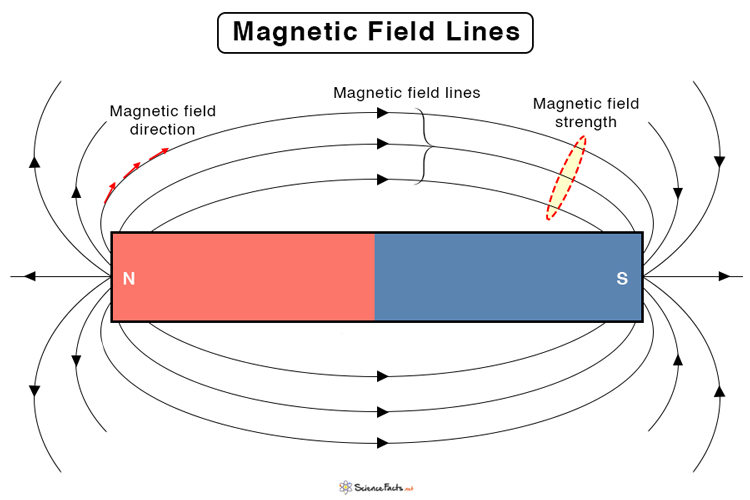
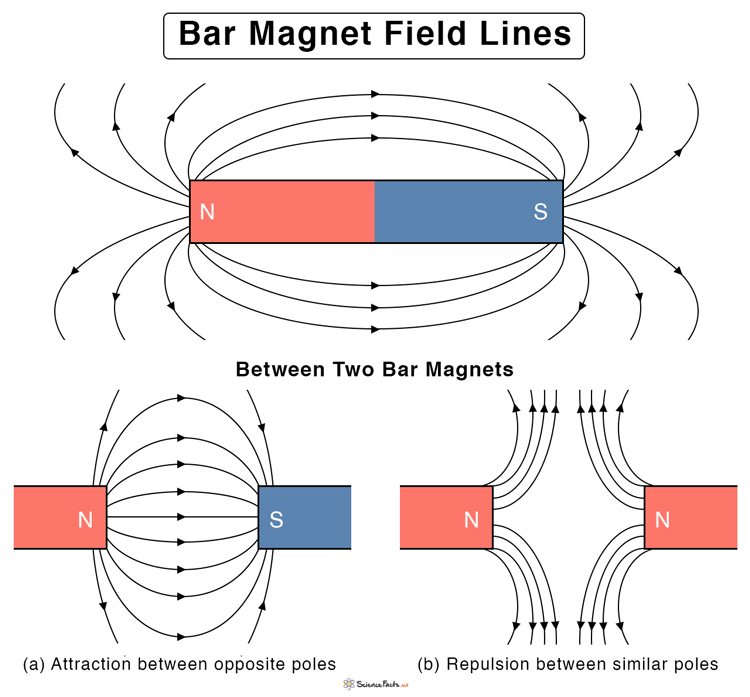
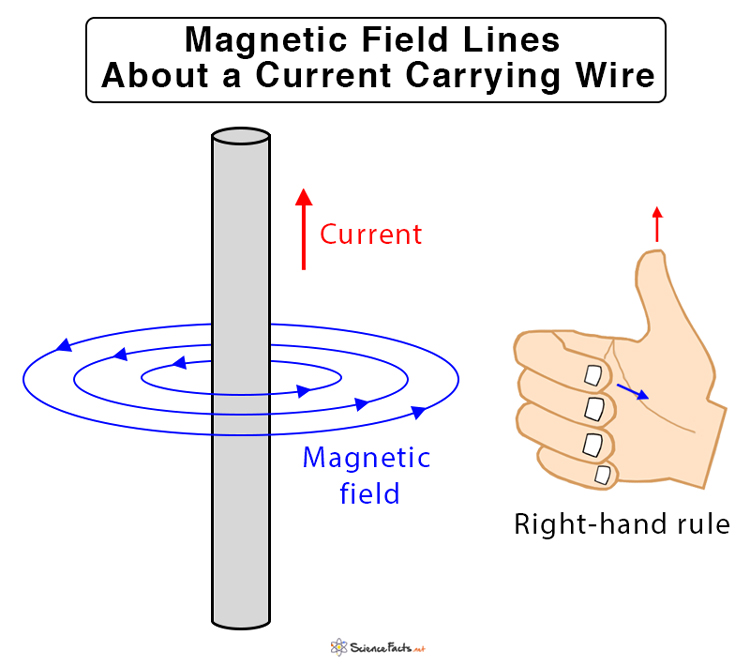
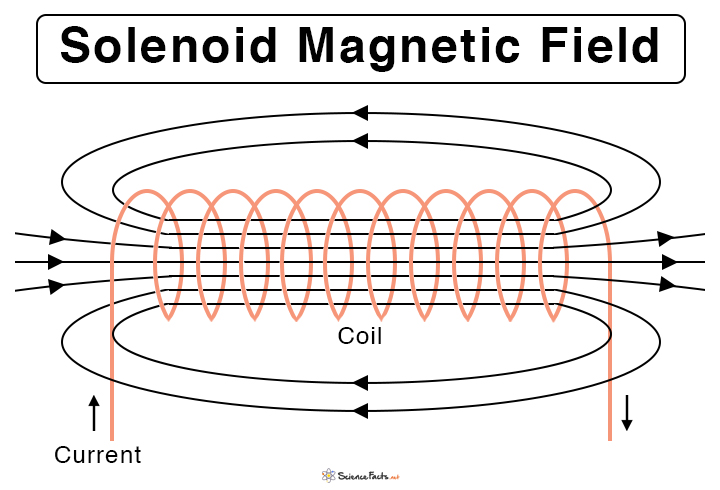
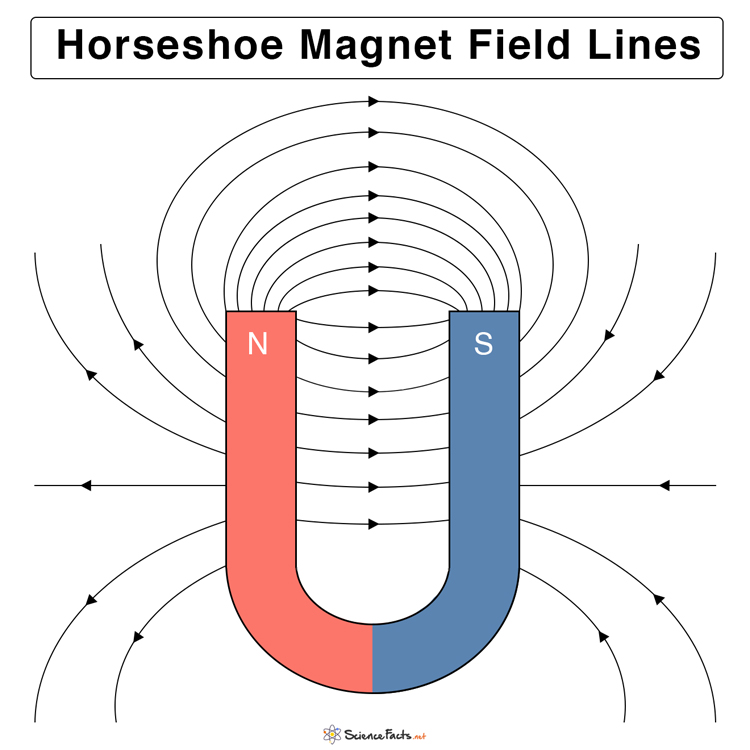







very good